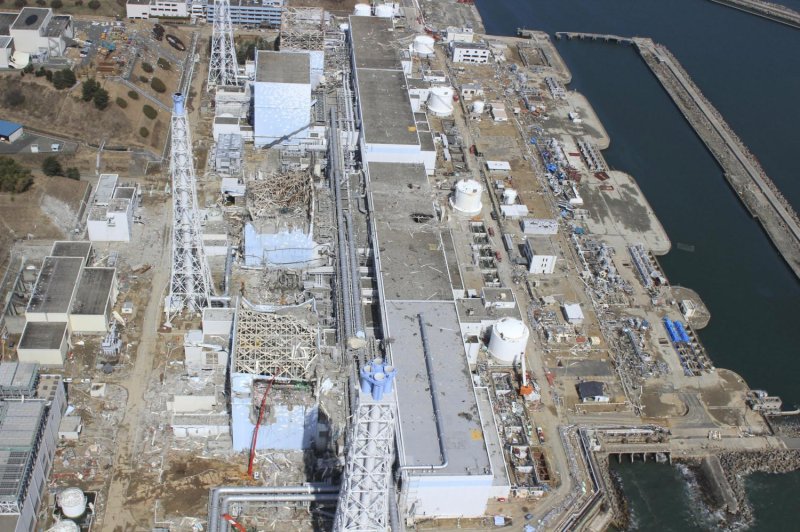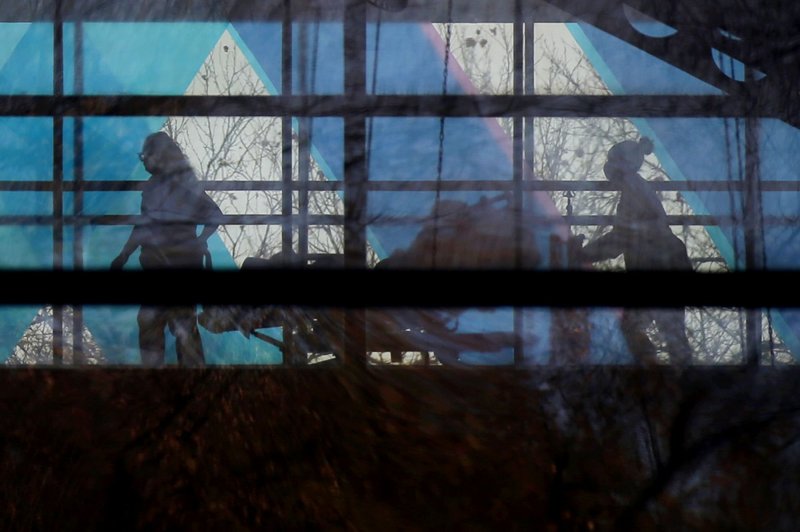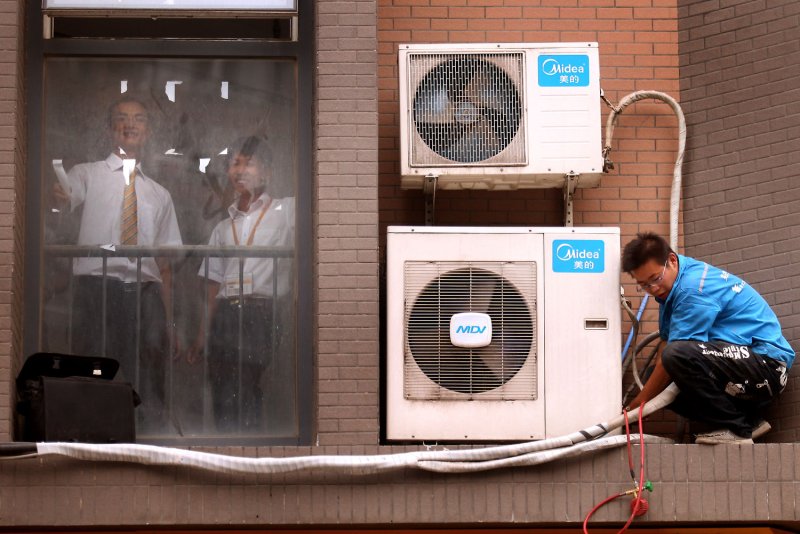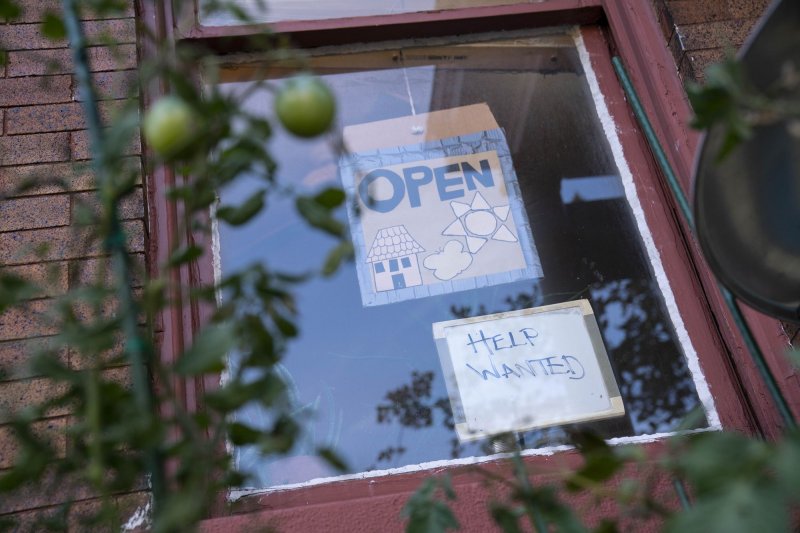By QASSIM ABDUL-ZAHRA and ZEINA KARAM

In this Feb. 5, 2003 file photo, Secretary of State Colin Powell holds up a vial he said could contain anthrax as he presents evidence of Iraq's alleged weapons programs to the United Nations Security Council. Powell, former Joint Chiefs chairman and secretary of state, has died from COVID-19 complications. In an announcement on social media Monday, the family said Powell had been fully vaccinated. He was 84. (AP Photo/Elise Amendola, File)
BAGHDAD (AP) — For many Iraqis, the name Colin Powell conjures up one image: the man who as U.S. secretary of state went before the U.N. Security Council in 2003 to make the case for war against their country.
Word of his death Monday at age 84 dredged up feelings of anger in Iraq toward the former general and diplomat, one of several Bush administration officials whom they hold responsible for a disastrous U.S.-led invasion that led to decades of death, chaos and violence in Iraq.
His U.N. testimony was a key part of events that they say had a heavy cost for Iraqis and others in the Middle East.
“He lied, lied and lied,” said Maryam, a 51-year-old Iraqi writer and mother of two in northern Iraq who spoke on condition her last name not be used because one of her children is studying in the United States.
“He lied, and we are the ones who got stuck with never-ending wars,” she added.
As chairman of the Joint Chiefs of Staff, Powell oversaw the Persian Gulf war to oust the Iraqi army in 1991 after Iraqi leader Saddam Hussein invaded Kuwait.
But Iraqis remember Powell more for his U.N. presentation justifying the invasion of their country more than a decade later by casting Saddam as a major global threat who possessed weapons of mass destruction, even displaying a vial of what he said could have been a biological weapon. Powell had called Iraq’s claims that it had no such weapons “a web of lies.” No WMD were ever found, however, and the speech was later derided as a low point in his career.
“I am saddened by the death of Colin Powell without being tried for his crimes in Iraq. ... But I am sure that the court of God will be waiting for him,” tweeted Muntadher al-Zaidi, an Iraqi journalist who vented his outrage at the U.S. by throwing his shoes at then-President George W. Bush during a 2008 news conference in Baghdad.
In 2011, Powell told Al Jazeera he regretted providing misleading intelligence that led the U.S. invasion, calling it a “ blot on my record.” He said a lot of sources cited by the intelligence community were wrong.
But in a 2012 interview with The Associated Press, Powell maintained that on balance, the U.S. “had a lot of successes” because “Iraq’s terrible dictator is gone.”
Saddam was captured by U.S. forces while hiding in northern Iraq in December 2003 and later executed by the Iraqi government.
But the insurgency that emerged from the U.S. occupation grew into deadly sectarian violence that killed countless Iraqi civilians, and the war dragged on far longer than had been predicted by the Bush administration and eventually helped give rise to the Islamic State group. President Barack Obama pulled U.S. troops out of Iraq in 2011 but sent advisers back in three years later after the Islamic State group swept in from Syria and captured large swaths of both countries.
Powell’s U.N. testimony “resulted in the deaths of tens of thousands of Iraqis. This blood is on his hands,” said Muayad al-Jashami, a 37-year old Iraqi who works with nongovernmental organizations.
While he did not suffer direct losses, al-Jashami said he continues to struggle with stress and panic attacks as a result of growing up with war, displacement, and years of terrorist bombings in the country.
Aqeel al-Rubai, 42, who owns a clothes and cosmetics shop in Baghdad, said he doesn’t care if Powell regretted the faulty information he gave on WMD.
Al-Rubai, who lost his cousin in the war, also blames the U.S. for the death of his father, who had a close call during the sectarian blood-letting that followed the U.S. invasion, and later had a fatal heart attack.
“What does that remorse do for us? A whole country was destroyed, and we continue to pay the price,” he said. “But I say may God have mercy on him.’
Elsewhere, Powell was remembered as “a towering figure in American military and political leadership over many years, someone of immense capability and integrity,” by former British Prime Minister Tony Blair, who backed the U.S. campaign and invasion.
German Foreign Minister Heiko Maas tweeted that Powell was a “straight-talking foreign policy official” and a “trans-Atlantic bridge-builder.”
The Israeli Embassy in Washington praised Powell for his “commitment to Israel and his deep personal connection to the Jewish community.”
Mary Robinson, the former president of Ireland, said Powell was “a wonderful, moral man who was misled terribly in the context of the Iraq war before the Security Council.” Robinson heads The Elders, a group of retired world leaders.
But Maryam, the writer from northern Iraq, refuses to accept the idea that Powell may have been misled on Iraq.
“I don’t believe that,” she added. “And anyway, when lives are at stake, you do not have that luxury.”
___
Karam reported from Beirut.













